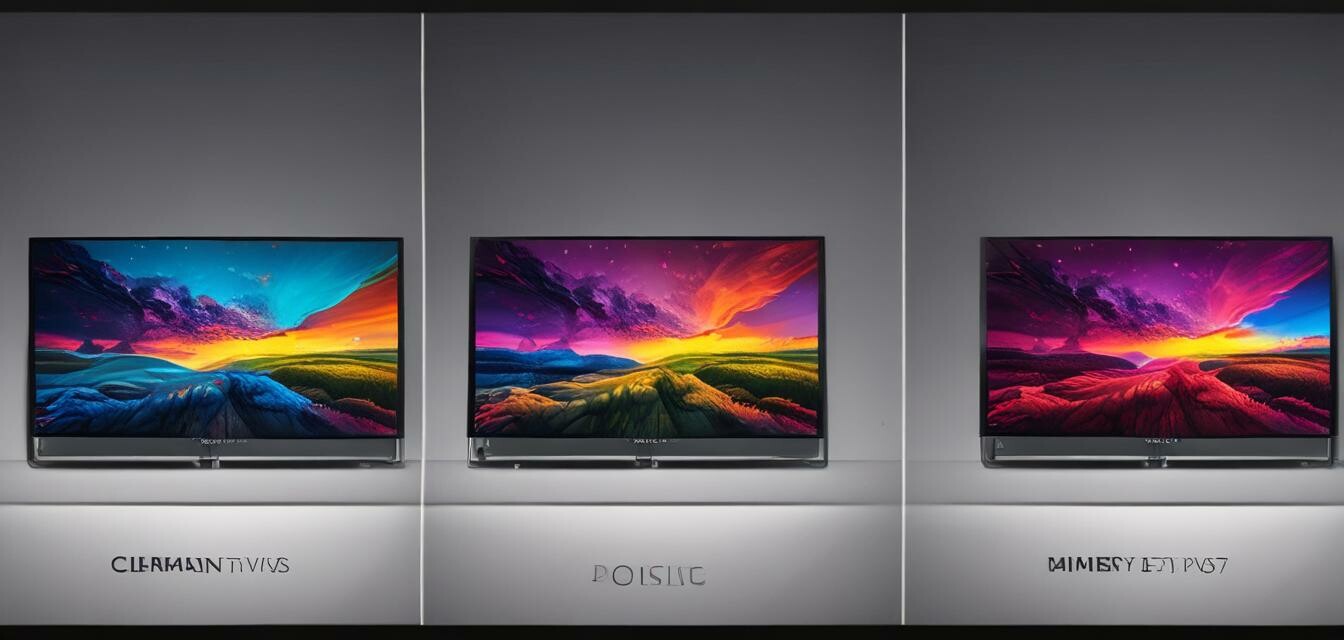
Comparing OLED and Mini-LED TVs: Which Should You Choose?
Key Takeaways
- OLED TVs
- Mini-LED technology
- Consider screen size, viewing environment, and content type for your choice.
- Both technologies provide exceptional picture quality for different needs.
Choosing between OLED and Mini-LED TVs can be a daunting task. Both technologies promise to elevate your viewing experience, but they do so in different ways. This article breaks down each format, examining their strengths, weaknesses, and suitability for different types of viewers. Let's dive into the world of OLED and Mini-LED and discover which one might be the best fit for your home entertainment system.
Understanding OLED Technology
OLED, or Organic Light Emitting Diodes, is a revolutionary technology where each pixel emits its own light. This means that OLED TVs can achieve perfect blacks and stunning contrast ratios, making them ideal for watching movies in dark environments.
- Deep Blacks: Each pixel turns off completely, allowing true black levels.
- Vibrant Colors: OLED displays are known for their rich color reproduction.
- Wide Viewing Angles: The image remains consistent even at off angles.
Exploring Mini-LED Technology
Mini-LED is an enhancement of traditional LED technology, using smaller LEDs to control backlighting more precisely. This allows for better contrast and brightness levels, making Mini-LED TVs ideal for bright rooms.
- Higher Brightness: Mini-LED TVs can offer higher peak brightness levels.
- Improved Color Accuracy: Enhanced control of backlighting means vibrant colors.
- Cost-Effective: Generally, Mini-LED TVs are more affordable than OLEDs.
Comparison Table: OLED vs. Mini-LED
| Feature | OLED | Mini-LED |
|---|---|---|
| Black Levels | Perfect Black | Good (but can show blooms) |
| Brightness | Moderate | High |
| Color Gamut | Excellent | Very Good |
| Viewing Angles | Wide | Narrower |
| Price | Higher | Lower |
Choosing the Right TV for Your Needs
When choosing between OLED and Mini-LED, consider your unique viewing habits:
- Viewing Environment: If you watch TV in a bright room, Mini-LED may be better due to its higher brightness.
- Content Type: For movies and dark scenes, OLED is preferred for its deep blacks.
- Budget: If you want a balance between great performance and price, consider Mini-LED.
Bitzee, Disney Interactive Toy
Play with digital versions of Disney characters and explore magical moments with this interactive toy. It reacts to swipes, tilts, and taps, keeping kids engaged.
Learn MorePros and Cons of Each Technology
Pros of OLED
- Exceptional contrast and color accuracy.
- Wide viewing angles.
- Ultra-thin design.
Cons of OLED
- Higher price point.
- Risk of burn-in from static images.
Pros of Mini-LED
- Brighter screens, ideal for well-lit environments.
- Lower risk of burn-in.
- More affordable than OLED alternatives.
Cons of Mini-LED
- Inferior black levels compared to OLED.
- Narrower viewing angles.
Conclusion
Ultimately, the decision between OLED and Mini-LED boils down to individual preferences and viewing conditions. If you prioritize deep blacks and are watching in a dark room, OLED might be your best bet. However, if you're looking for brightness in a well-lit area and a more budget-friendly option, Mini-LED is a solid choice. Always consider the specifics of your setup and what you most enjoy watching before making a decision.
For more information about luxury electronics and the best deals available, visit our category Luxury Electronics.


